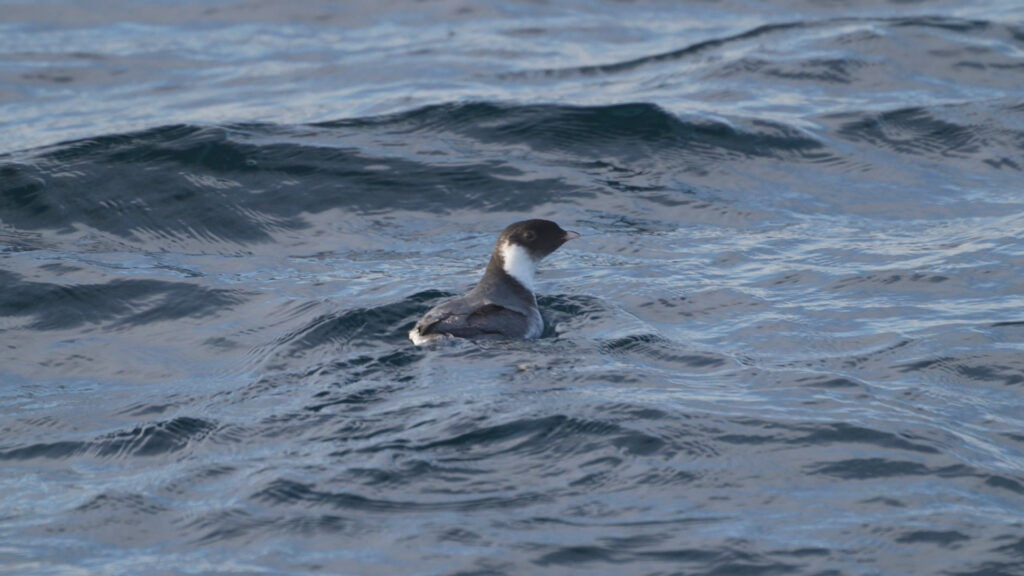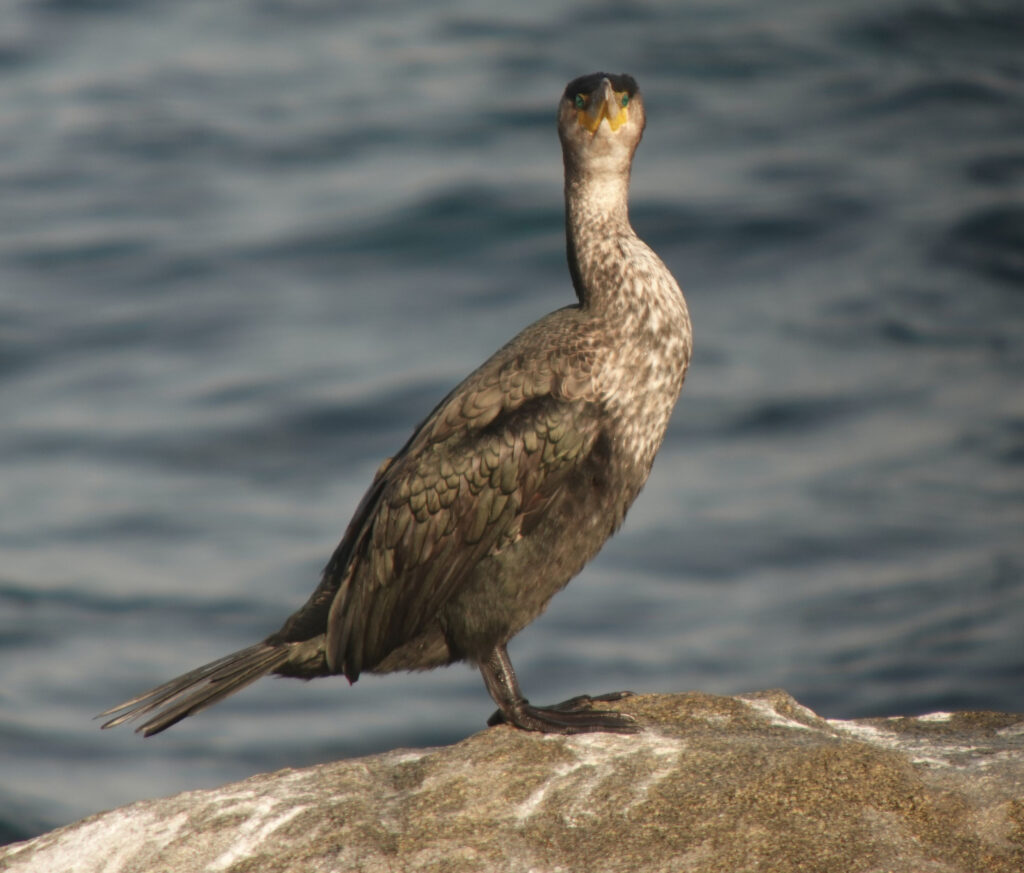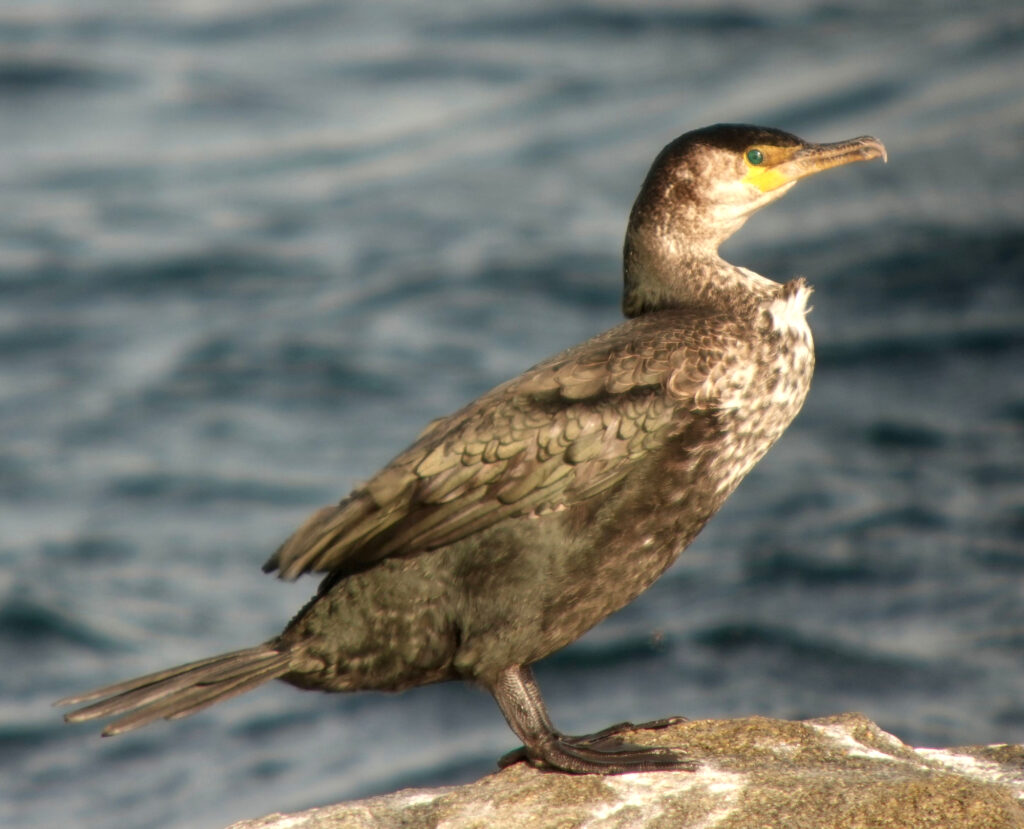Bird News from Dr Nial Moores, with Dr Bernhard Seliger & Ms Baek Minjae, Dr Jungmoon Ha and Mr Kim Eojin (???) With essential funding support from the Hanns Seidel Foundation (Korea office), a return visit to the inner...
Bird News from Dr Nial Moores, with Dr Bernhard Seliger & Ms Baek Minjae, Dr Jungmoon Ha and Mr Kim Eojin (???)
With essential funding support from the Hanns Seidel Foundation (Korea office), a return visit to the inner border region in the far Northeast of the ROK to conduct a 4-day survey of “marine preferential seabirds and waterbirds”. This survey follows on from monthly counts through 2016 into 2017, and this time was also organised to help with the making of one (or more videos?) for the ??? You Tube Channel, to help raise awareness of the importance of this area. We also benefited this time from the company of visiting Canadian artist, Mr Adrian Gollner, on 5th and 6th – who we hope will also include this area in his ongoing artwork which looks at the birds of the inner border region of Korea.
Happily, our survey dates coincided with some decent weather and a tremendous southward movement, especially of Pacific Loons and Rhinoceros Auklet. In all, from December 4th to 7th we counted between 21,386 and 38,848 birds (former number based on summing of the peak day count of each species; latter based on adding together counts of birds moving south each day). This total included 1% or more of population of several species, again confirming the international importance of this area to marine bird life.
Although very few scoters were seen and we could not confirm a couple of suspected Least Auklet, highlights and / or notable species included:
Brant Goose. Two feeding offshore from the Geojin Headland on 6th.
 Brant Goose Branta bernicla ???? © Bernhard Seliger.
Brant Goose Branta bernicla ???? © Bernhard Seliger.
Harlequin Duck. Forty of this gorgeous duck were counted in our main survey area, with another 7+ further south in Ayajin. Happily, some were remarkably confiding.
 Harlequin Duck Histrionicus histrionicus ?????? © Nial Moores.
Harlequin Duck Histrionicus histrionicus ?????? © Nial Moores.
Red-necked Grebe ?????. An estimated total of 251 were seen.
Great Crested Grebe ?????. An estimated total of 655 were seen, including several small groups migrating 10km offshore on the 4th.
Horned Grebe ??????. Although usually absent here, a total of five seen.
Black-legged Kittiwake ??????. An estimated total of 208 was seen, most >2km from shore.
Thick-billed Murre ???????. One seen on the 4th.
Common Murre ????. Two seen on the 4th from the boat, and one seen on the 5th from the balcony of (the wonderful) January Pension.
Spectacled Guillemot ???????. Only one seen – that from the January Pension on the 7th.
Long-billed Murrelet. Two seen well from the boat on the 5th.
 Long-billed Murrelet Brachyramphus perdix ????? © Kim Eojin.
Long-billed Murrelet Brachyramphus perdix ????? © Kim Eojin.
Ancient Murrelet. A conservative estimate of 6,918 seen over the four days. Every year, it is great to re-experience these stunning little birds – with many of the ones we see wintering in Korea coming to us all the way from Canada!

 Close-up views of twittering flocks of Ancient Murrelets Synthliboramphus antiquus ????? is an annual birding highlight here in Korea © Bernhard Seliger.
Close-up views of twittering flocks of Ancient Murrelets Synthliboramphus antiquus ????? is an annual birding highlight here in Korea © Bernhard Seliger.
 Ancient Murrelet: cuteness and hardiness perfectly combined…© Kim Eojin
Ancient Murrelet: cuteness and hardiness perfectly combined…© Kim Eojin
Rhinoceros Auklet. A conservatively estimated total of 15,660 of these chunky auks were counted flying south between 4th and 7th. The highest day count was on 7th, when just over four hours of viz-migging produced 7,700 south – perhaps a national day high count? – with just under 4,000 of these passing by in just 20 joyous minutes – a black flying carpet stretched out over the sea!

 Rhinoceros Auklet Cerorhinca monocerata ???????. Above © Bernhard Seliger; below © Kim Eojin.
Rhinoceros Auklet Cerorhinca monocerata ???????. Above © Bernhard Seliger; below © Kim Eojin.
Pacific Loon ??????. Unusually for here, 80% or so of all the loons seen were considered to be Pacific – including many thousands flying south. During the four days, we estimate that 6,770 Pacific and 1,820 Arctic Loons went south, with hundreds also sat on the sea.
Yellow-billed Loon ?????. No good views, but was happy – after several winters without the usual sightings – to see three this survey (one on 4th and two on 7th).
Pelagic Cormorant. Counts of this species have to start each day 15 minutes before sunrise as most of the Pelagic Cormorant along this stretch of coast roost across the inner border on rocks in Haekumgang, DPRK and commute south early in the morning to feed along the ROK Goseong coast. The highest day count was 2,174.

 View from the January Pension shortly after sunrise; and a mixed flock of Pelagic Cormorant Urile pelagicus ????? and (apparent) Temminck’s Cormorants © Bernhard Seliger.
View from the January Pension shortly after sunrise; and a mixed flock of Pelagic Cormorant Urile pelagicus ????? and (apparent) Temminck’s Cormorants © Bernhard Seliger.
Temminck’s Cormorant. Certainly at least 90 – and possibly up to 1,000…Twenty years ago, you could safely assume that if you saw a large cormorant along the coast, that would be a Temminck’s. Then came an explosion in the population of Great Cormorants, which typically feed in freshwater but now often roost with other cormorants along the coast. Five years ago, there were only 50 or so Temminck’s along this stretch of coast and at least 400 Great Cormorants. This visit, every large cormorant on the sea looked at carefully turned out to be a Temminck’s. Are they also enjoying a sudden population increase?

 Temminck’s Cormorant Phalacrocorax capillatus ???? © Nial Moores.
Temminck’s Cormorant Phalacrocorax capillatus ???? © Nial Moores.
In addition to the wonderful sea-birding (marred by the discovery one day of one active fishing net that contained no less than 13 drowned or drowning Ancient Murrelets – more on that later), the mix of land-birds around Daejin harbour did not include any expected winter finches, but instead included 15 or so Light-vented Bulbul and a small flock of Red-billed Starlings. Neither of these generally warmth-loving species had even been recorded on the Korean Peninsula before the turn of this century…
 Red-billed Starling Spodiopsar sericeus ???????? © Bernhard Seliger.
Red-billed Starling Spodiopsar sericeus ???????? © Bernhard Seliger.
And finally – non-birding encounters included a distant whale sp seen from the boat on the 5th, and an oddly confiding Amur Goral seen by the roadside on the way back through the mountains to Seoul. A vet was contacted…
 Amur Goral © Bernhard Seliger
Amur Goral © Bernhard Seliger


